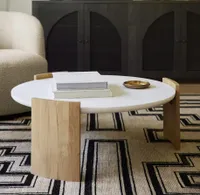These 3 style secrets are how interior designers always get the perfect pairing when using wood and marble
Using two contrasting materials together in design can have a dramatic effect. These designers explain how to pair to favorites: wood and marble


The art of mixing materials has been one of the best kept secrets of interior designers for decades. Now though, there's been an emerging trend of combining different surface textures by both designers and amateurs alike, and when it comes to the perfect pairing of materials, there really is no better combination than marble and wood.
Two of the most common materials used within interior design, each has their own admirable characteristics. The more traditional of the pair, wood, is favored for its versatility. From panelling to countertops to cabinet doors (and the very foundations that makes up our homes) wood is one of the most useful materials known to man. As an organically derived material, it adds warmth and softness to an interior that no manufactured material ever could.
As a natural stone, marble is popular in kitchens and bathrooms thanks to its durability as a cold, hard material. It's varied colors, finishes and veining patterns - from the classic calacatta through to black, grey and even gold varieties - makes it a great addition to the home no matter what the existing style. What's more, statement effects such as book-matched marble give this material the sense of luxury we tend to associate it with.
There's no denying the plethora of qualities each of these materials has individually, but since they share such different properties, how do we successfully pair them together? Knowing how to execute this sort of textured design is tricky, but luckily we've compiled some tips from leading designers who are well attuned to using the two materials alongside one another.

Lilith is an expert at following news and trends across the world of interior design. She's committed to sharing articles that help readers embrace emerging trends, alongside tips on how to style them. For this piece, she spoke with leading designers to learn how to use two of the most popular materials in interior design together: marble and wood.
Why do wood and marble work so well together despite their contrasts?
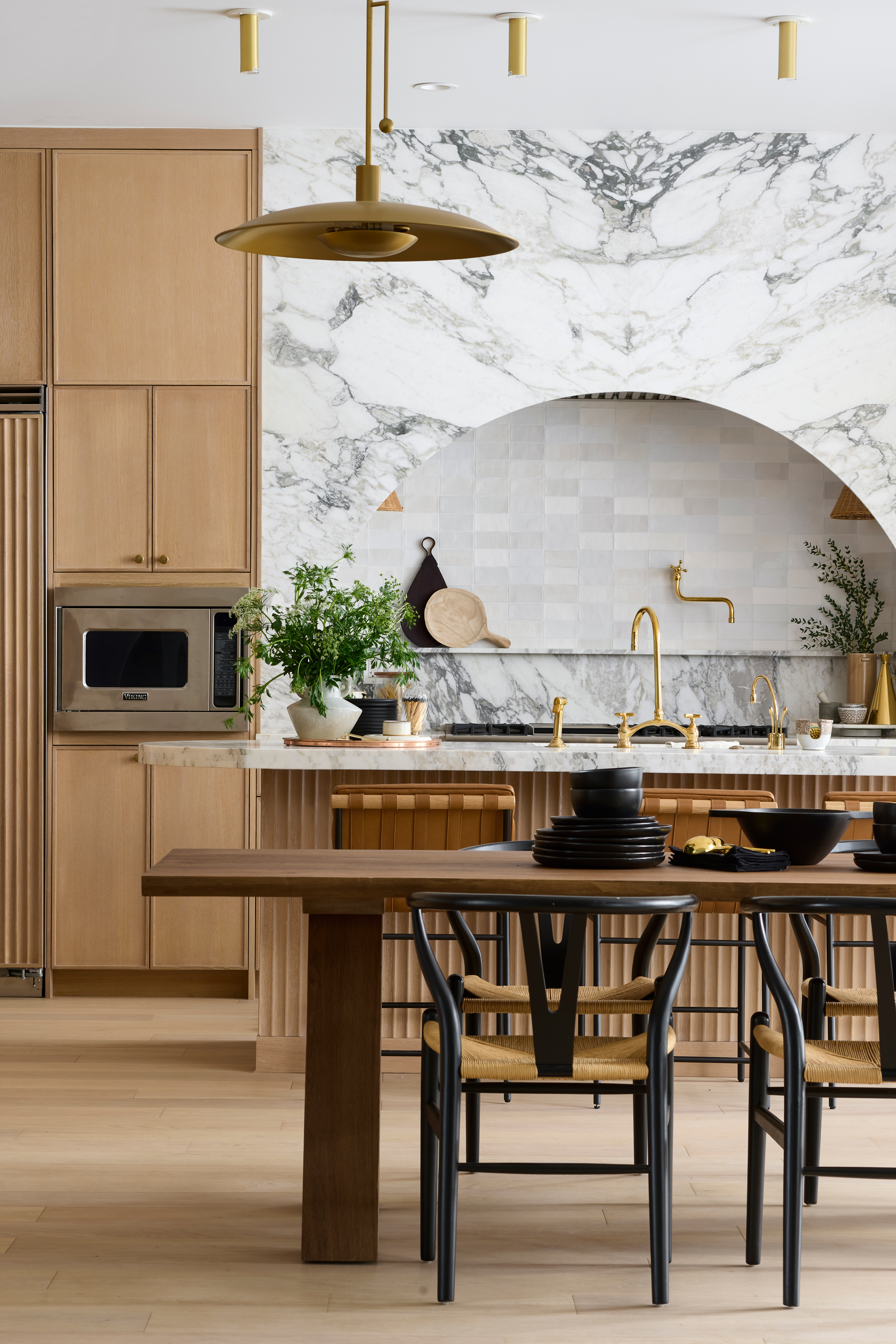
Before we think about how to use them in a design, it's useful to understand how these two materials complement each other despite their stark differences.
In fact, their distinct contrast is exactly why the two marry so beautifully. 'Despite one being warmer and the other being colder as a surface, their contrasting visual appeal strikes the perfect balance and complements each other perfectly,' explains Oliver Webb, design and director of stone specialists, Cullifords. 'Both natural products, the veining and details within marble complement the natural wood grains and knots beautifully.'
Then there's the individuality achieved by using two natural materials next to one another. Be it the veining in the marble or the knots in the wood, the best advantage is that no two are the same. As Dawn Filkins, Head of Creative at Smile Kitchens explains: 'Each slab of marble or wood stave is totally unique, resulting in an authentic, complementary aesthetic that also acts as a great design principle.'
The Livingetc newsletters are your inside source for what’s shaping interiors now - and what’s next. Discover trend forecasts, smart style ideas, and curated shopping inspiration that brings design to life. Subscribe today and stay ahead of the curve.
3 step guide to styling wood and marble together
Since it's valued for its practicality, we're more likely to use marble kitchen or bathroom designs. However, for a showstopping statement, don't limit yourself to these rooms with your marble decorating ideas.
'This pairing work just as well in living spaces such as lounges or even entryways where the cold surface of marble could be on the stairs or walls while the wood could come through in the furniture or accent details,' says Oliver. The main takeaway to bear in mind is that marble is not just a countertop material. From walls and floor tiles to more detailed decor like lamp bases, marble really has no limits.
When it comes to using the two materials together in less functional spaces, the trick is to allow the room to guide you. 'Your space will determine how much you use each material,' says Dawn. 'For example, a kitchen space allows homeowners to incorporate more of these materials as a part of the main design whereas in a bedroom you can opt to choose marble accessories and bring wood in through your furniture or flooring.'
1. Experiment with contrasting tones
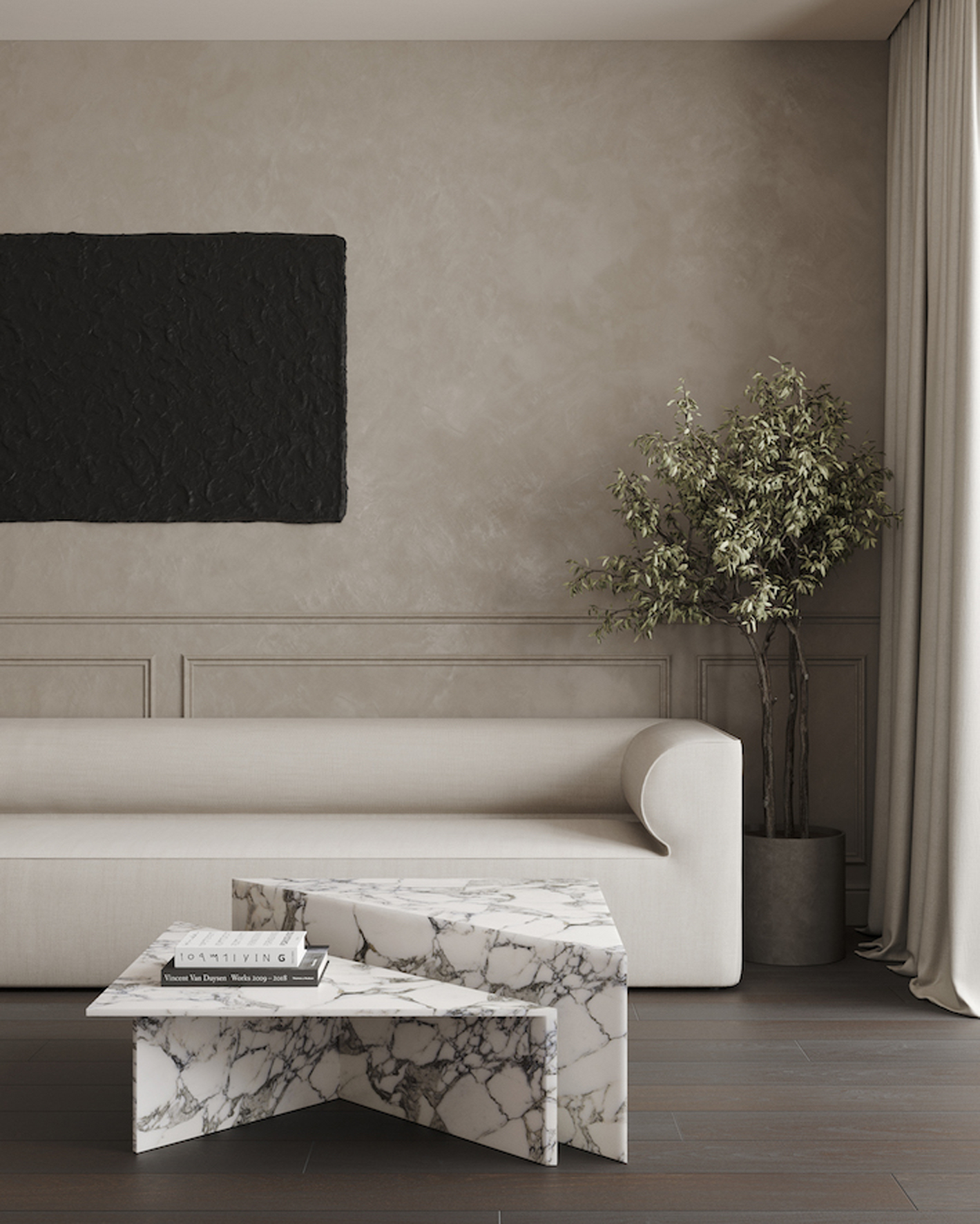
Just as you want to experimenting with texture design, an effective pairing of marble and wood will emphasize the different tones found in each material, too. The warm beiges and browns of wood look great against a harsh white or black marble finish. Not only does it highlight the attributes of each material, but if creates a visual intrigue guaranteed to catch the eye.
'Lighter marble works excellently against paler woods such as Ash or Beech, creating a fresh, clean and modern look,' says Dawn. 'Oppositely, darker marble creates depth and drama with deep, warmer woods such as walnut or mahogany to create a lavish look.'
In general, these two materials permit full creative freedom to mix and match to your heart's desire. In our eyes - whether light with light, light and dark, or dark on dark - each pairing has its own unique aesthetic beauty. As Oliver explains: 'It very much comes down to personal preference, but generally, a lighter more classic Italian white marble will look beautiful sat against both light and dark woods.'
As a general rule of thumb, light marble is more versatile than dark varieties. As Oliver and Dawn explain, it pairs beautifully with any wood type while dark marble, although working well in a dramatically moody scheme when paired with dark mahogany tones, extra care must be taken to avoid overwhelming the space.
For a lesson in mixing materials, we love how this hotel also uses contrasting tones.
Whilhem round coffee table, Lulu and Georgia
For a coffee table that combines the beauty of wood and marble, this simple yet brilliant design from Lulu and Georgia is our go to
2. Consider the material patterns, too
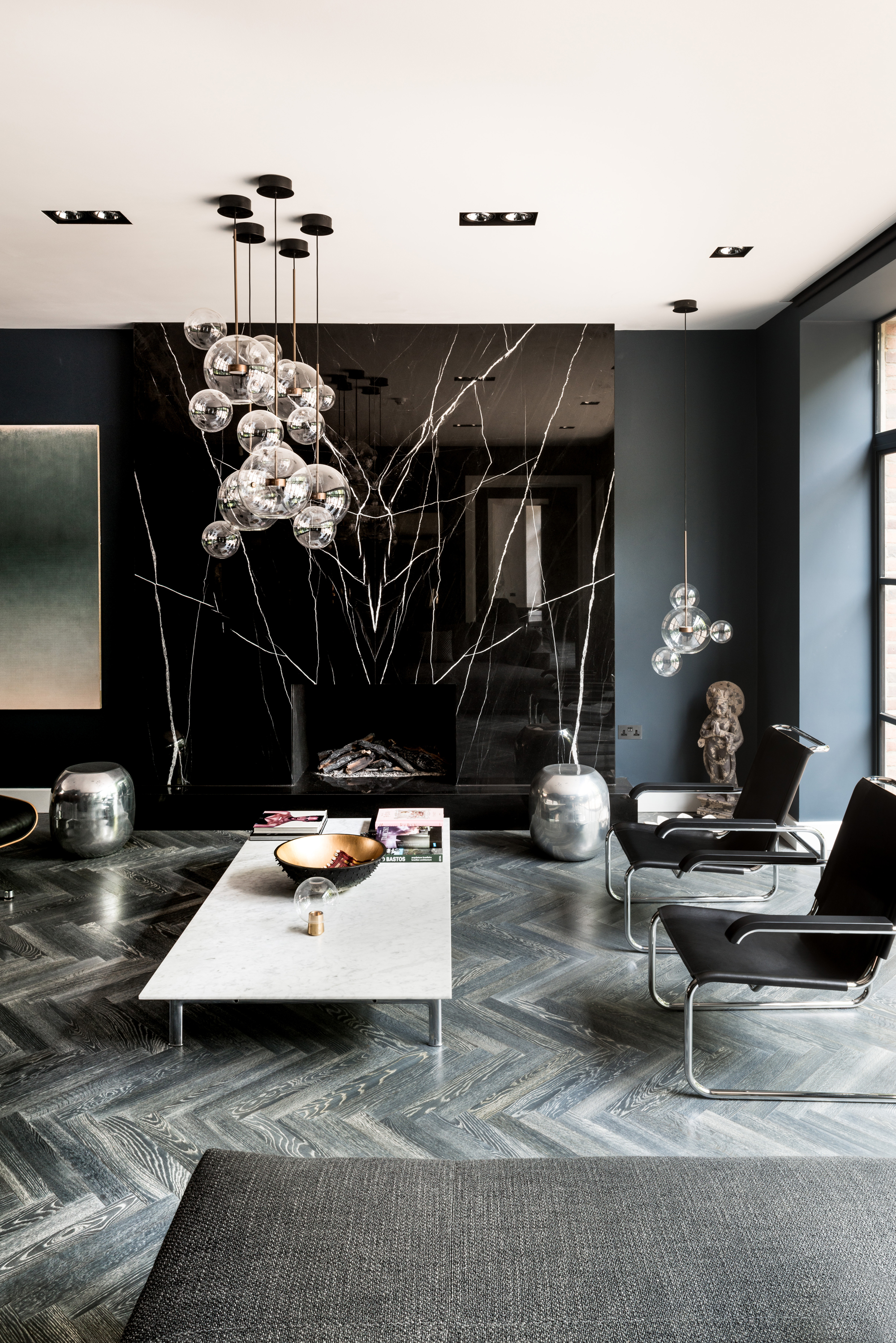
Oliver also advises having one surface that's more detailed than the other so that they can balance each other out.
'If you have a particularly dark, colorful or busy marble, consider pairing it with a smooth darker wood, so as not to distract from the colored detailing,' he says. 'If you opt for a more neutral, very light grey veined marble on a white background, pairing it with a lighter wood with more texture and detail will work beautifully.'
3. Consider your ratio
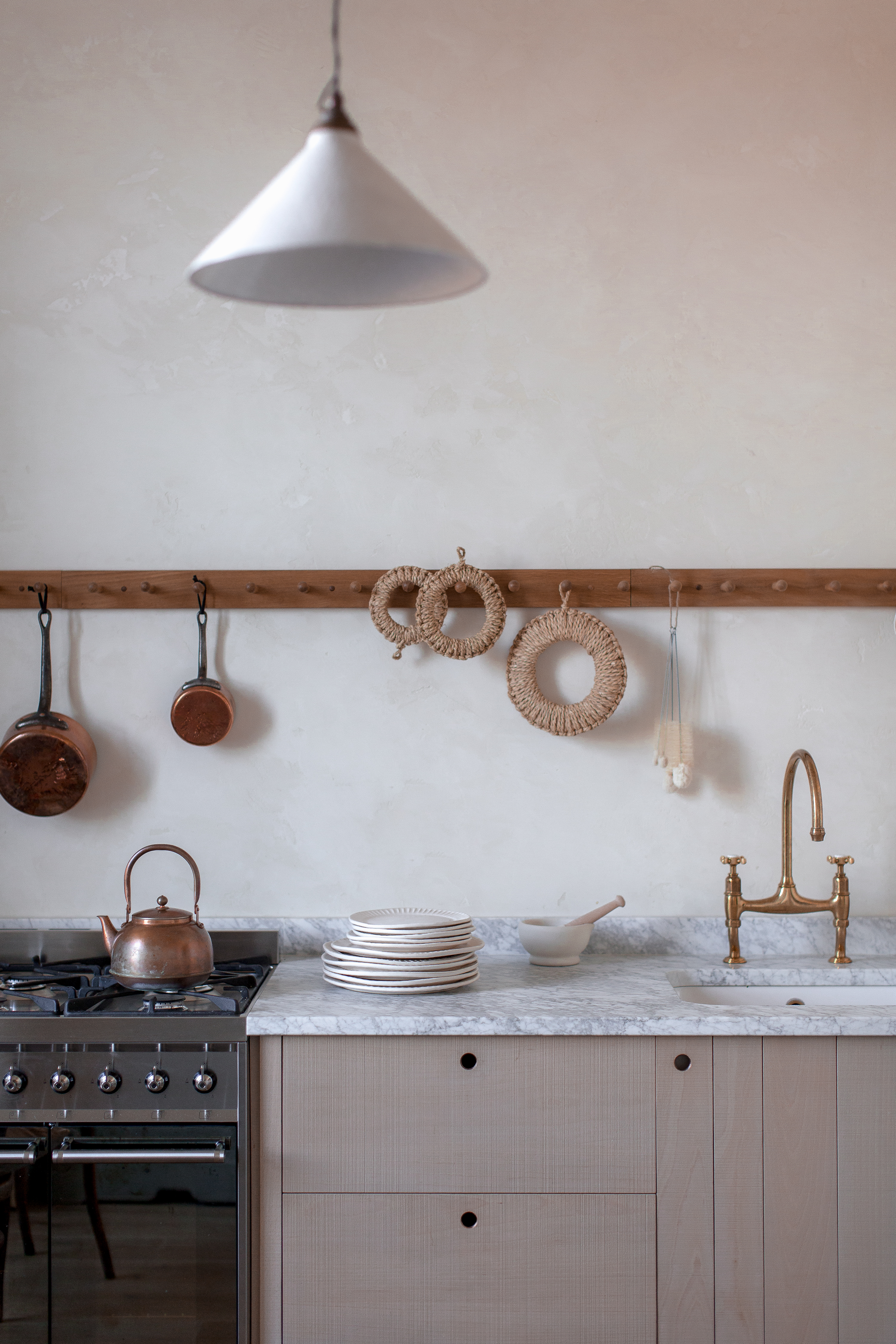
Finally, give consideration to the ration between the two materials. As is always the case in interior design, balance is key. Too much wood or marble could detract from the beautiful simplicity of this pairing.
'Each material should complement and support one another rather than being too overpowering,' says Dawn. In general you should use less marble than wood since marble's harsh, bolder effects can drown the softness of the wood. Tools such as the 60-30-10 rule can also be used to help create a balanced scheme.
'You should also consider how you will be using each material,' Dawn adds. 'As marble is quite an erosive product, frequent use will lead to imperfections and blemishes on the surface. If you want to achieve this look without this risk, consider an alternative such as a marble effect worktop.'

Lilith Hudson is a freelance writer and regular contributor to Livingetc. She holds an MA in Magazine Journalism from City, University of London, and has written for various titles including Homes & Gardens, House Beautiful, Advnture, the Saturday Times Magazine, Evening Standard, DJ Mag, Metro, and The Simple Things Magazine.
Prior to going freelance, Lilith was the News and Trends Editor at Livingetc. It was a role that helped her develop a keen eye for spotting all the latest micro-trends, interior hacks, and viral decor must-haves you need in your home. With a constant ear to the ground on the design scene, she's ahead of the curve when it comes to the latest color that's sweeping interiors or the hot new style to decorate our homes.
